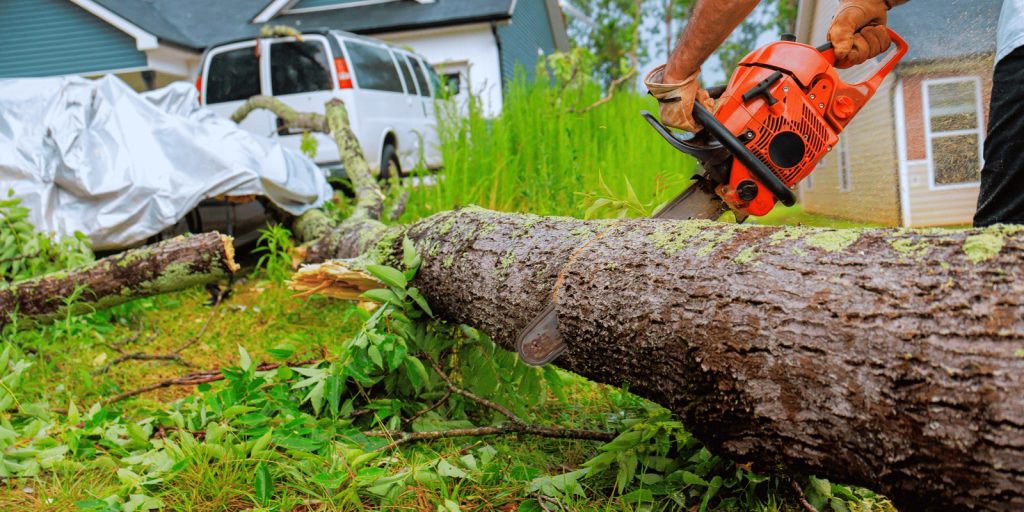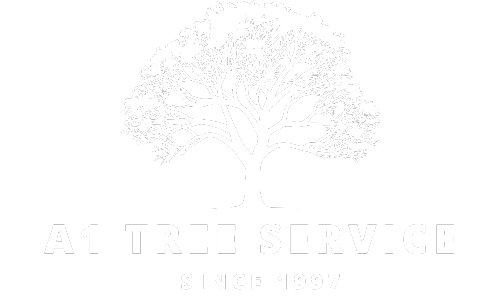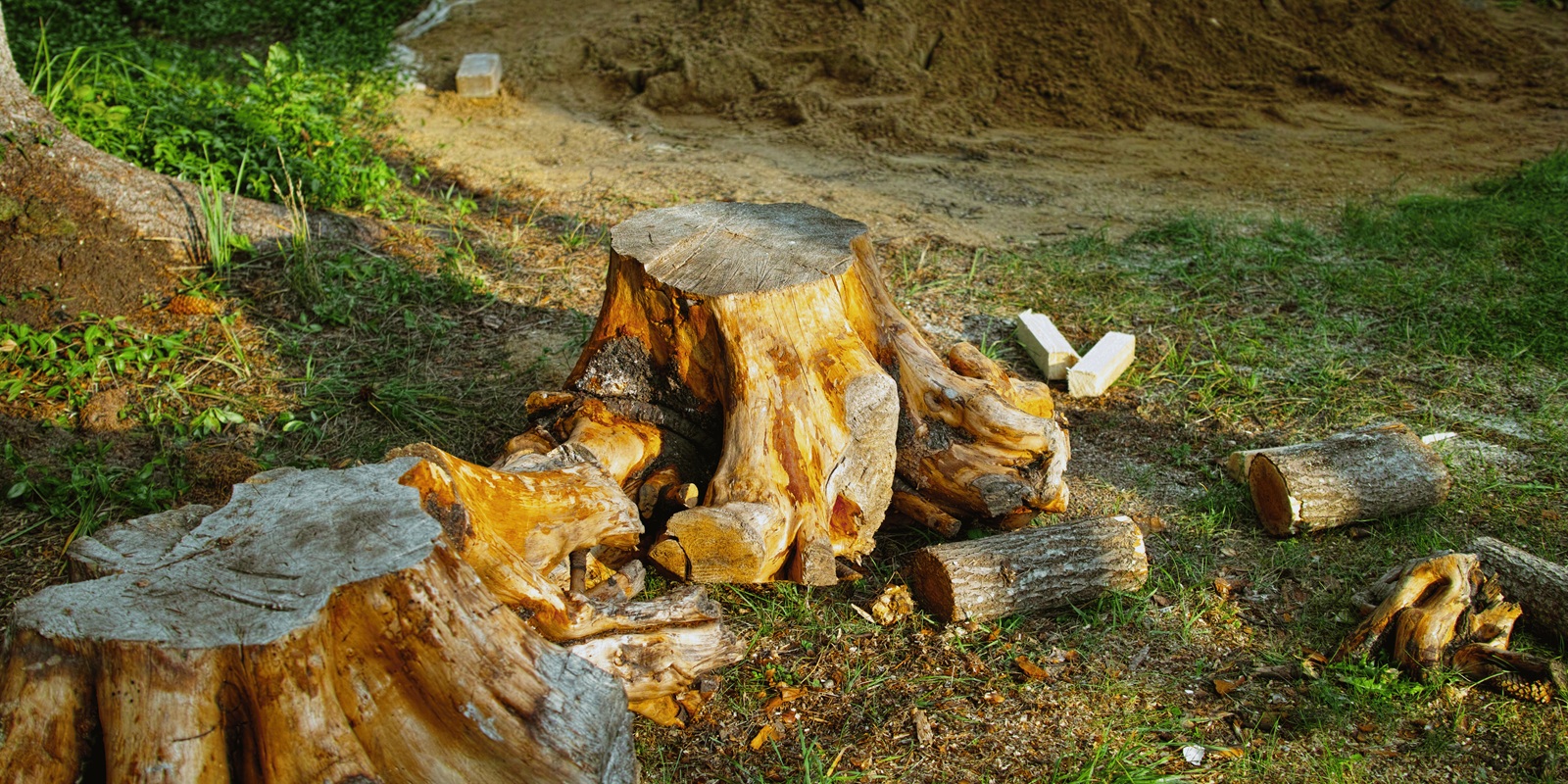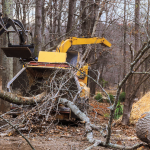The best thing about planting a new tree is that it is a great way of beautifying your yard, adding some shade and environmental support. But suppose you have just had a tree stump cut? Is it possible to plant another tree on the same place the old tree was? This is one of the frequent questions of homeowners and people who work in the garden. In this paper, we will discuss all that you should know about planting a tree where a stump has been cut, when you might be able to do it, how to prepare the soil, and how to have the best practices that offer a tree a healthy beginning.
Why Stump Removal Matters
It is important to know about the removal of stumps before planting a new tree.
What is Stump Removal?
The procedure of removing the tree trunk left after a tree has been cut down is known as stump removal. This can be achieved by means of grinding the stump into tiny chips or simply digging it out. Removing stumps will open up space to new planting or landscaping.
Why Remove a Stump?
- Safety– Stumps may be a stumbling hazard
- Aesthetics–Stumps are not appealing to the eye
- Pests–Stumps that have not been removed can be a source of insects such as the termites and beetles
- Ease–The ease of planting is increased by removal of the stump and minimum root competition is ensured
Can You Plant a Tree Where a Stump Was Removed?
The simple answer to this is yes, a tree can be planted where a stump has been pulled off. Nonetheless, there are numerous factors that the success of your new tree will be based on.
Factors to Consider Before Planting a Tree After Stump Removal
Method of Stump Removal
- Stump Grinding: If the stump has been ground, part of roots and wood debris are left in the ground.
- Complete Removal: If the entire stump and roots were excavated, the soil will be clearer.
Soil Condition
Remnants of old roots may have an influence on the quality of soil.
The Decaying Wood May:
- Usurp nutrients and water that are required by a new tree
- Have an influence on soil structure and soil aeration
Timing
What was the time of stump removal? Instant planting as opposed to waiting until the soil settles down can count.
How Long Should You Wait to Plant a Tree After Stump Removal?
It is advisable from specialists that you wait a few months or even a year before planting a new tree in the place where there was a stump.
This Waiting Period Allows:
- Breaking down of the remaining roots and wood
- Soil to stabilize and replace the nutrients
- Pest issues to be reduced
Keep in mind that:
- Deterioration of wood burns up nitrogen required to grow
- Root residues can lead to root growth retardation
- Immediately after stump grinding, soil compaction may be a problem

Can You Plant Immediately After Stump Removal?
If you are interested in planting right away, take the following factors into consideration:
- Eliminate the Roots: It is better to excavate the old roots
- Enhance Soil: Add compost or organic materials to enhance nutrients
- Select a Resistant Species of Tree: These trees react better to a poorer soil
Preparing the Soil for Planting a New Tree
The new tree needs to be provided with the best start by the preparation of good soil.
Step 1: Cleanup Wood Remnants and Root Remnants
Although the stump has been ground, do your best to extract the large pieces of wood and roots. These have the capability of rotting and stealing away nutrients from your new tree.
Step 2: Test the Soil
Take a soil test to determine the level of nutrients and pH. This makes you aware of whether you should add supplements or fertilizers to the soil.
Step 3: Improve Soil Quality
- Add well-rotted manure or compost
- Add organic matter to enhance drainage and aeration
- Do not use heavy clay soil that is liable to suffocate of roots
Choosing the Right Tree for Planting After Stump Removal
The appropriate species depends on the type of soil you have, so you should choose correctly.
Trees that can grow in hard conditions:
- Red Maple (Acer rubrum): There is a variety of soil that it can tolerate
- Dogwood (Cronus Florida): Suitable in shaded areas
- Eastern Redbud (Cercis canadensis): This plant is a cultivar that grows in different soils
- Sweetgum (Liquidambar styraciflua): Adaptive and grows quickly
In the meantime, do not plant trees that are very particular about their soil.
How to Plant a Tree Where a Stump Was Removed
Planting your new tree can be a successful process and it can be carried out with the following steps:
Step 1: Dig a Proper Hole
Prepare the hole in which the plant is to be planted two or three times broader than the root ball but not deep. Large spaces promote the growth of roots.
Step 2: Add Nutrients
It is best to put back the soil you take out of the hole.
Step 3: Position the Tree
Install the tree in such a way that the root of the tree (where roots are escaping at the base) is on the ground level.
Step 4: Backfill Carefully
Use re-soil, filling the hole and pressing the soil in to get it to settle so that there are no air pockets left.
Step 5: Water Thoroughly
Water heavily upon planting to get roots to settle.
Aftercare Tips for Your New Tree
Watering
- Water frequently
- Wet soil, not swamped
Mulching
- Put on 2 to 3 inches of mulch at the base
- Mulch should never be touching the trunk as it will rot
Monitoring
- The signs of being stressed such as wilting or yellowing of leaves should be noted
- Protect from pests and animals as necessary
Common Problems When Planting a Tree Where a Stump Was Removed
Nitrogen Deficiency
- Deterioration of wood burns nitrogen creating dull leaves or inadequate growth
- Remedy: Planting- fertilize with a fertilizer that contains a lot of nitrogen
Root Competition
- The roots of the past might be an obstacle to new roots
- Remedy: What you should do is take away as many old roots as you can and then plant
Soil Compaction
- Fine particles of soil can be compacted by heavy equipment involved in the extraction of stumps
- Remedy: Soften soil using a garden fork or a tiller and then plant



